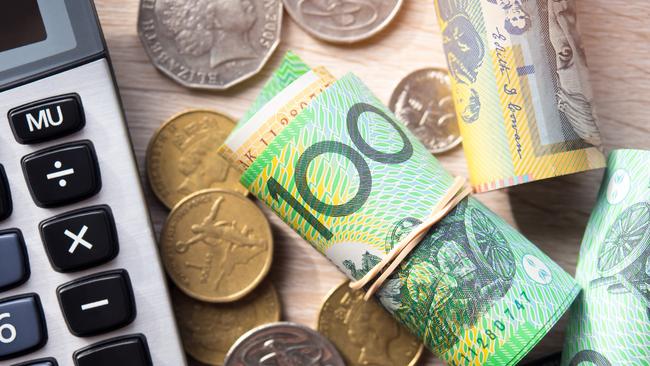Bank deposits jump by billions despite higher rates and inflation
Households have hoarded an extra $191bn in two years despite surging inflation and interest rates, and it could impact home loan costs.
National
Don't miss out on the headlines from National. Followed categories will be added to My News.
Surging household deposits suggest a widening gap between haves and have-nots and are clouding the outlook for Reserve Bank of Australia interest rate cuts later this year.
Almost $200bn has been added to households’ bank accounts since the RBA began lifting its official cash rate in May 2022, according to figures from the Australian Prudential Regulation Authority, as the Covid cash-hoarding trend continued.
Deposits now total a record $1.46 trillion, boosted by a $6.17bn gain in February alone, APRA’s latest monthly banking statistics show, and the total rise since April 2022 is $191.4bn.
“It’s astounding to think money in the bank from households is still going up, rather than down, after years of surging inflation and 13 cash rate hikes,” RateCity research director Sally Tindall said.
She said Covid had forced people to put a priority on personal finances and many had continued to bunker down and make severe budget cuts, but “totals and averages never tell the whole story”.

“While some financial fortresses are getting bigger and stronger, many are down to their very last reserves and some are well into the red,” Ms Tindall said.
“Money in the bank from households might be growing but so are the numbers of people falling behind on their mortgage, moving on to hardship policies or calling a community support organisation like the National Debt Helpline,” she said.
AMP chief economist Shane Oliver said rising deposits also reflected the bigger returns offered by cash in the bank.
“As interest rates go up it becomes more attractive to put your money in a bank deposit, so you would expect that there would be some increase,” Dr Oliver said.
Many savings accounts are paying interest rates above 5 per cent, while some introductory and bonus accounts offer more than 5.5 per cent.
The jump in deposits overall was hiding “devil in the detail”, Dr Oliver said.
“It probably does reflect a divergence between the haves and the have-nots – it’s not necessarily a sign that all households are in good shape,” he said.
“There would be households that would be really struggling and they would be running down their bank deposits to service their mortgage, then other – usually older – wealthier households that are taking advantage of the higher interest rates.”
Higher deposits, along with recent lower-than-expected unemployment figures, make the RBA’s task of timing future interest rate cuts trickier, and several economists have revised their rate cut forecasts until later this year.
Dr Oliver said Australia’s inflation – currently at 4.1 per cent – would dominate the RBA’s decision making.
“But there’s no doubt the strong economic data we are seeing – particularly the jobs data – does add to the risk that rate cuts might be delayed,” he said.

“Higher household deposits are a sign that, on average, the household sector is still in reasonable shape.”
RateCity’s Ms Tindall said the RBA was determined to get inflation back within its target range of 2-3 per cent, and it was acutely aware that Australia’s record-high deposits were not evenly spread.
“If anything, it buys the central bank more time to make absolutely sure it gets inflation back in its box,” she said.
“While the RBA might have expected this buffer would have dropped by now, the fact that so many Australians have decided to build up their safety net is testament to our financial acumen.”
More Coverage
Originally published as Bank deposits jump by billions despite higher rates and inflation





